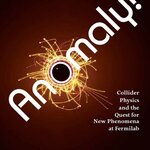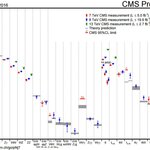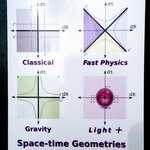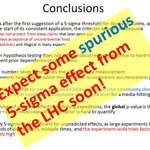Physics

If you are in Cambridge, MA on Thursday, Jan. 26, you can see me live at MIT in room 3-270 from 3 to 5pm. If you are anywhere else and have Internet access, you can see me YouTube live in the same time slot.Here is the poster I put up 53 times on the MIT campus and 4 times at Harvard:
For those interested, here are the other four links to click on:Quaternion Gravity intro, http://bit.ly/vp-qgQuaternion Gravity videos, http://bit.ly/vp-qg-videosiPython notebooks, http://bit.ly/vp-billiardsMain Quaternion site, http://bit.ly/vp-q

I am pleased to report that the book I wrote on the CDF experiment and on collider physics at the Tevatron, "Anomaly!", has been declared this week's "book of the week" by the Times Higher Education site. There, you will be able to read Tara Shears' very nice review of my book, along with some additional considerations and biographical notes on yours truly by Karen Shook.It is nice for me to see the product of eight years of work being appreciated. So far I am only aware of very positive comments on the book, from the endorsements by Witten, Kane, Carroll and others (you can read them at the…

Summing up My New Semi-Empirical
Neutrino Physics Ideas from 2016 Year
…

I thought it would be good to let you readers of this column know that in case you wish to order the book "Anomaly! Collider Physics and the Quest for New Phenomena at Fermilab" (or any other title published by World Scientific, for that matter) you have 10 more days to benefit of a 35% discount off the cover price. Just visit the World Scientific site of the book and use the discount code WS16XMAS35).The book has been described here before, so I will not do it again. At the above link you can find a description and the index of the book, along with endorsements by Edward Witten, Gordon…

I am spending a week in Israel to visit three physics institutes for colloquia and seminars: the Tel Aviv University (where I gave a colloquium yesterday), the Haifa Technion (where I am giving a seminar today), and the Weizmann institute in Rehovot (where I'll speak next Wednesday).
The topic of my talk is the same you've heard about already if you are a regular of this column: the five-sigma criterion for discovery claims in physics, its history and shortcomings, and the proposal of how to update it. Tangentially, I also mention some of the material discussed in detail in my book "Anomaly!…

Today I am actually quite proud of my research institute, the "Istituto Nazionale di Fisica Nucleare, INFN, which leads Italian research in fundamental physics. In fact a selection to hire 73 new researchers with permanent positions has reached its successful conclusion. Rather than giving you my personal opinions (very positive!) I think it is better to let speak the INFN president Fernando Ferroni, and the numbers themselves. Hence, I will translate the press release of INFN (available in Italian here). Please forgive any translation mistake - I did this rather quickly ;-)
Today, December…

During the past few months I have been giving seminars and colloquia in several institutes around Europe and the US. The topic was more or less always the same, i.e. the discovery criterion used in fundamental physics to decide whether to claim for the observation of a new phenomenon. We set this at 5-sigma -that's, e.g., how the Higgs boson has been discovered in 2012. This is an arbitrary choice, and there is a lot to learn from a study of the history of how the criterion became an established practice, and from the statistical issues it entails.Here is a list of the past events:
- Oslo…

Today while I was having a shower I happened to think at how cool it is that we can actually measure the rate of production, in single hadron-hadron collisions, of multiple elementary particles. A graph like the one below, now routinely produced by ATLAS and CMS whenever they collect more data or switch to a higher center-of-mass energy, looks "natural" to produce, but it is actually surprising that we indeed can pull it off - it requred careful design choices in a number of ways. I wish to discuss one of these here.
[Above, the production rate of different final states measured by CMS is…

Just put them in the mail on December 24...
It was a fun year of thinking, whether the idea is right or wrong. Since the core idea fits on a Christmas card, it is worth continuing to think about in the new year.
Peace to all, and to all a good night.

In any physicists' new-year wish list there is a mandatory item: the finding of some unexpected, bolt-from-the-blue new physics result - possibly leading to highly-cited publications, press interviews and invitations, and ultimately career advancements or other similar ego boosts. Because we do it for the progress of mankind and the furthering of human knowledge, but we also do it for ourselves- we are human beings too.This christmas collider physicists at the LHC have a reason to look forward with optimism to the near future: the experiments have collected unprecedented amounts of data at…